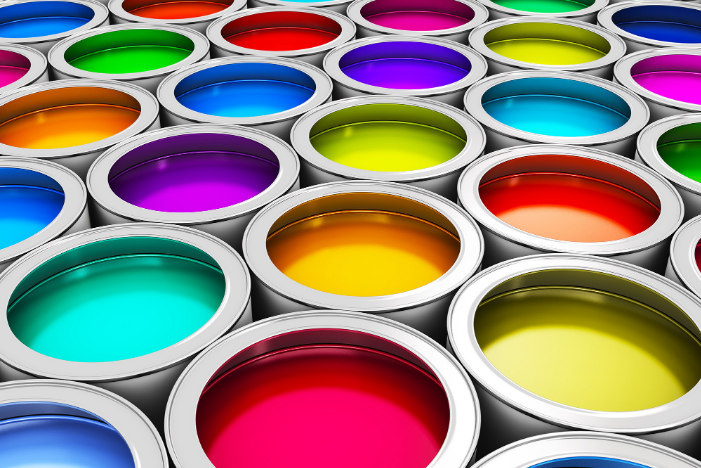The Ultimate Guide to Hydroxyethyl Cellulose for Paints
Hydroxyethyl cellulose (HEC) is a versatile, highly effective additive widely used in the paint and coatings industry. It serves as a key component in water-based paints, contributing to the formulation’s thickening, stabilization, and overall performance. In this article, we will explore the importance of hydroxyethyl cellulose, its varied benefits in paint applications, and how it enhances the quality of the final product.
What is Hydroxyethyl Cellulose (HEC)?
Hydroxyethyl cellulose (HEC) is a non-ionic, water-soluble polymer derived from cellulose, the most abundant natural polymer on earth. It is produced by chemically modifying cellulose to introduce hydroxyethyl groups, which increase its water solubility and thickening properties. Due to its excellent rheological properties and ease of use, HEC is frequently utilized as a thickening agent, binder, and stabilizer in water-based systems, especially in paints.

The Role of HEC in Paint Formulations
In paint applications, hydroxyethyl cellulose acts as a multifunctional additive, providing a wide range of benefits that improve the performance, appearance, and application of the final product. Let’s take a closer look at some of the key roles HEC plays in paint formulations.
1. Thickening Agent
One of the primary uses of hydroxyethyl cellulose in paints is as a thickening agent. HEC ensures that the paint has the right viscosity for easy application, whether by brush, roller, or spray. It improves the paint’s consistency and flow characteristics, making it easier to spread evenly over surfaces without dripping or running. By controlling the viscosity, HEC also helps to ensure that the paint adheres properly to the surface and delivers a smooth, professional finish.
2. Stabilization of Pigments and Fillers
HEC serves as an excellent stabilizer, preventing the pigments and fillers in the paint from settling or separating over time. This ensures that the paint retains its uniform color and texture during storage and application. The stabilization of pigments is crucial for achieving consistent color intensity and coverage across different batches of paint.
3. Water Retention and Open Time
Hydroxyethyl cellulose improves the water retention properties of paints, which is particularly important in water-based formulations. By slowing down the evaporation of water, HEC extends the open time of the paint, allowing for better workability and easier corrections during application. This also reduces the risk of brush marks or lap lines, resulting in a more uniform finish.
4. Film Formation and Durability
HEC contributes to the formation of a strong, durable film once the paint dries. This film helps to protect the underlying surface from moisture, chemicals, and abrasion, thereby extending the lifespan of the painted surface. The film-forming properties of hydroxyethyl cellulose are particularly important in protective coatings used for industrial and outdoor applications.
5. Improved Brushability and Leveling
HEC improves the brushability and leveling properties of paints, making it easier for users to achieve a smooth, even finish. Brushability refers to how well the paint can be applied with a brush, while leveling describes the paint’s ability to flow out and smooth itself after application. HEC enhances both of these factors, resulting in a finish that is free from streaks, roller marks, and other imperfections.
Why Choose Hydroxyethyl Cellulose for Paints?
Hydroxyethyl cellulose offers several advantages that make it a preferred choice for paint manufacturers. Here are some of the reasons why HEC is widely used in the paint industry:
1. Non-Ionic Nature
HEC is a non-ionic polymer, meaning it does not interact with other charged particles in the paint formulation. This makes it compatible with a wide range of additives, pigments, and binders, ensuring stability and versatility in different formulations.
2. High Thickening Efficiency
HEC provides effective thickening even at low concentrations, making it a cost-effective option for paint manufacturers. Its ability to thicken without the need for high usage levels means that manufacturers can achieve the desired viscosity and performance with minimal impact on the overall formulation cost.
3. Excellent Film Clarity
One of the unique properties of hydroxyethyl cellulose is its ability to form clear, transparent films. This is particularly beneficial in clear coatings or when a glossy finish is desired. The clarity of the film ensures that the paint’s color and finish are not compromised by the presence of the thickener.
4. Biodegradability and Environmental Friendliness
As a derivative of cellulose, HEC is biodegradable and environmentally friendly. It is sourced from renewable plant materials, making it a sustainable choice for manufacturers who are looking to reduce their environmental footprint. The use of HEC in water-based paints also reduces the need for solvents, which are harmful to the environment and human health.
Applications of Hydroxyethyl Cellulose in Different Types of Paints
HEC can be used in a variety of paint formulations, ranging from decorative paints to industrial coatings. Let’s explore some of the common applications of HEC in the paint industry.
1. Water-Based Paints
Hydroxyethyl cellulose is widely used in water-based paints due to its ability to provide excellent thickening, stabilization, and water retention. These paints are commonly used in residential and commercial buildings for both interior and exterior applications. HEC helps to ensure that water-based paints are easy to apply, dry evenly, and provide long-lasting protection.
2. Latex Paints
In latex paints, hydroxyethyl cellulose acts as both a thickener and a stabilizer. Latex paints are popular for their durability and ease of use, and HEC enhances these properties by ensuring that the paint has the right consistency and flow. It also prevents the pigments and binders from separating, ensuring a uniform finish.
3. Industrial Coatings
HEC is also used in industrial coatings, where its ability to form strong, durable films is particularly valuable. These coatings are used to protect surfaces from corrosion, chemical exposure, and abrasion. HEC improves the performance of industrial coatings by ensuring that they adhere properly to the surface and provide long-lasting protection.
4. Specialty Coatings
Hydroxyethyl cellulose is also used in specialty coatings, such as anti-graffiti paints, fire-retardant coatings, and waterproofing treatments. In these applications, HEC’s ability to enhance film formation, stability, and water retention is critical to the performance of the coating.
Conclusion
Hydroxyethyl cellulose plays a vital role in the formulation of high-quality paints, offering numerous benefits such as thickening, stabilization, film formation, and water retention. Its non-ionic nature, cost-effectiveness, and environmental sustainability make it an ideal choice for a wide range of paint applications, from decorative to industrial. By incorporating HEC into your paint formulations, you can achieve superior performance, ease of application, and long-lasting protection for your painted surfaces.

